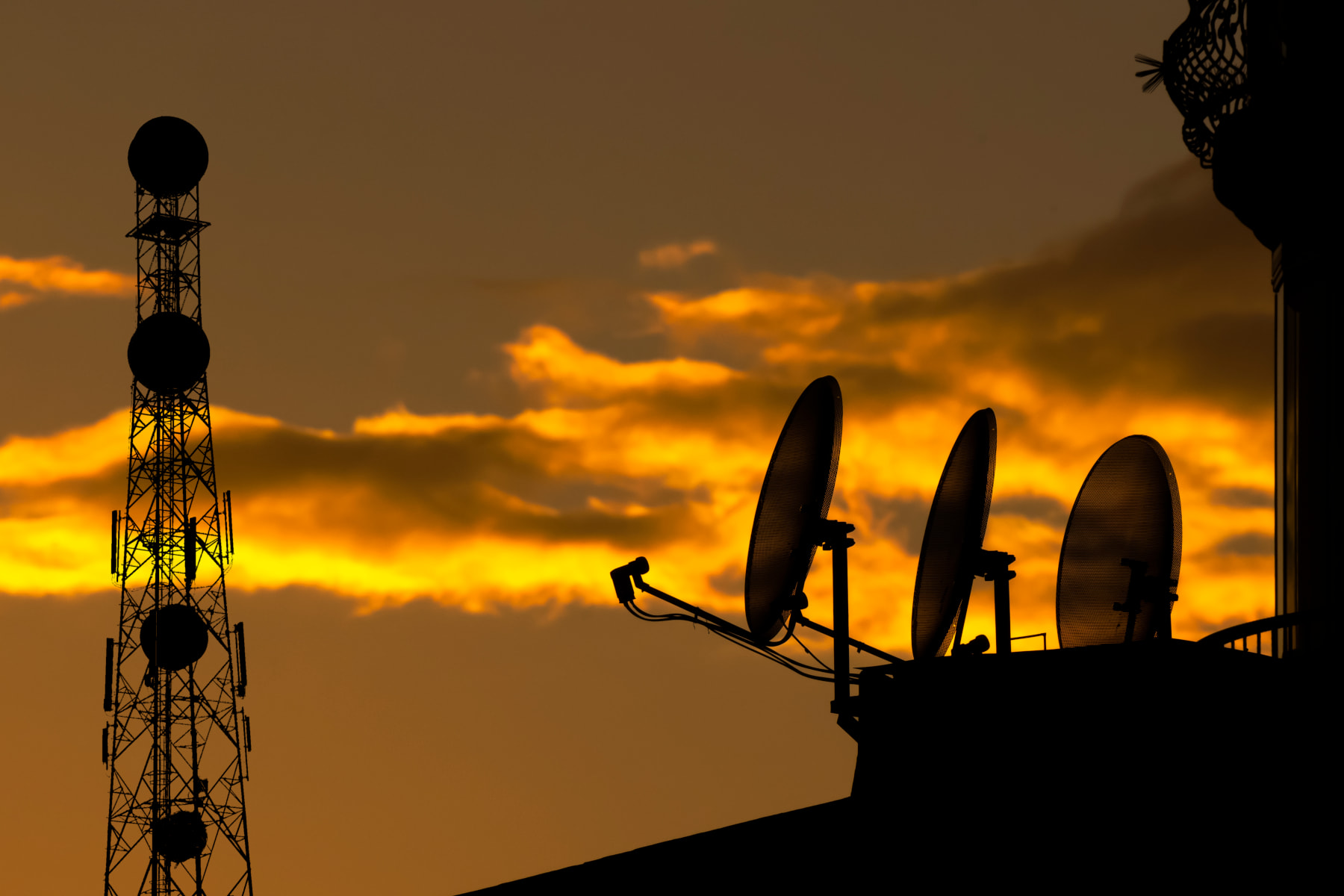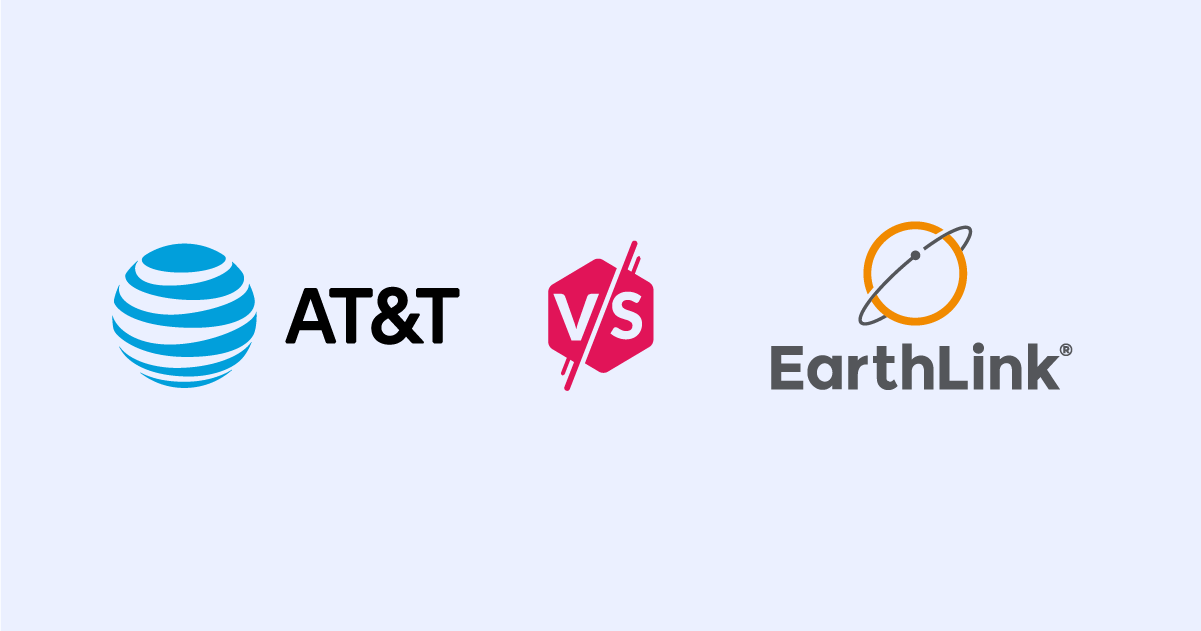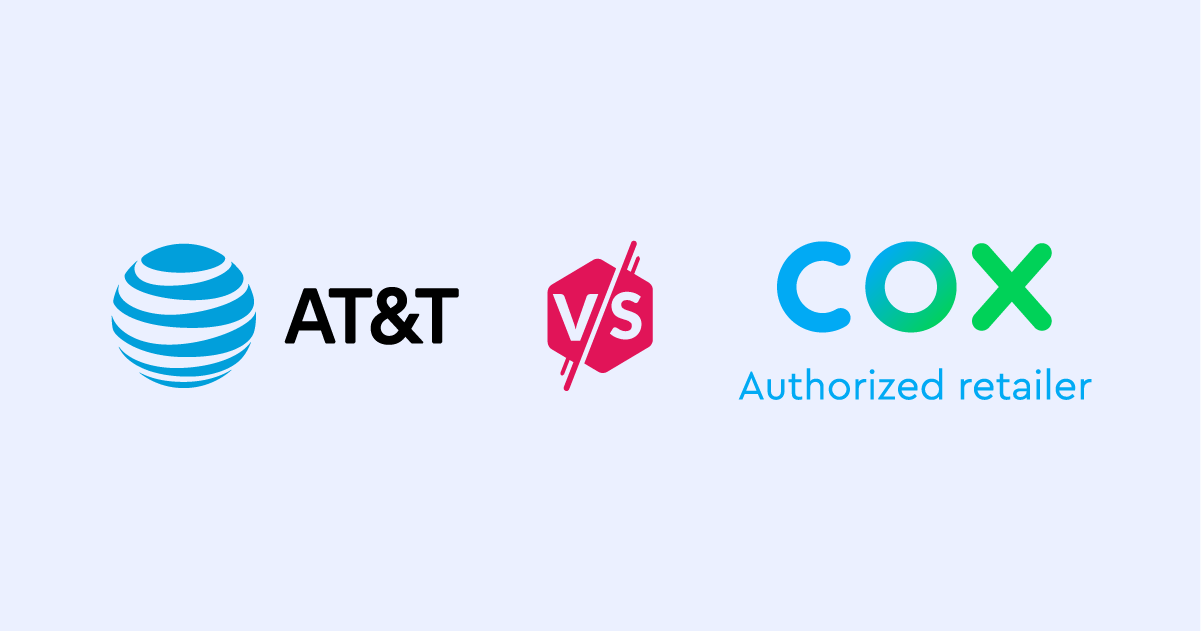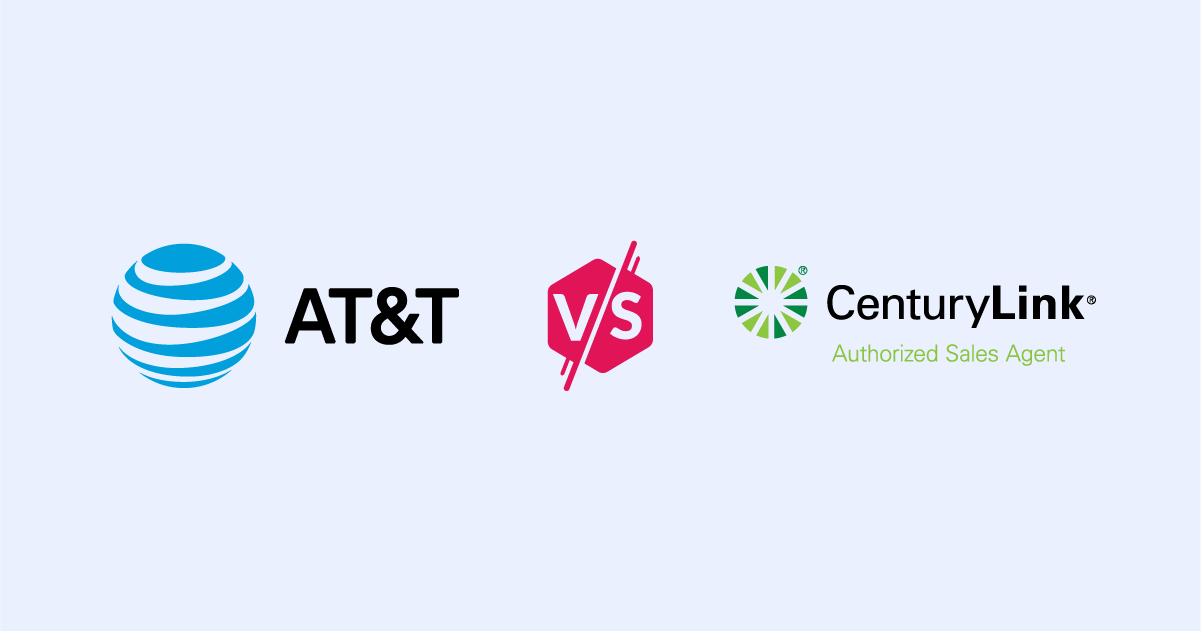Xfinity vs. Spectrum
Xfinity and Spectrum are the nation’s biggest cable internet providers, but which one offers the best plans for you?
Jun 5, 2023 | Share
Brand Guides, Provider Comparisons (Versus)
-
Best for speed
- Customer rating: 3.5
- Price: $25.00–$80.00/mo.
- Max speed: 75–1,200 Mbps
- Internet type: Cable
- Data cap: 1.2 TB, No data cap
- Contract: Contract-free and contract-based plans
-
Best for availability
- Customer rating: 3.6
- Price: $49.99–$89.99/mo. for 12 mos.
- Max speed: Up to 300–1,000 Mbps° (wireless speeds may vary)
- Internet type: Cable
- Data cap: No data cap
- Contract:No contract
Data as of 03/30/23. Offers and availability may vary by location and are subject to change.
°Speed based on wired connection. Available Internet speeds may vary by address. Gig capable modem required for Gig speed. For a list of Gig capable modems, visit Spectrum.net/modem.
Compare Xfinity and Spectrum head to head
Xfinity and Spectrum are both cable internet providers, so they’re pretty similar. You can’t go wrong with either one.
But there’s one big dividing line that separates the two like the Grand Canyon: data caps. Spectrum doesn’t have data caps, but its introductory prices are slightly higher than Xfinity’s. You get more for your money with Xfinity at the start, but your monthly cost goes up if you want unlimited data like Spectrum.
We’ll dig more into the details of each so you can decide which service is best for your needs.
Pros and cons: Xfinity vs. Spectrum
 Pros:
Pros:
- Wide availability
- Reliable connections
 Cons:
Cons:
- Extra monthly fee for unlimited data
- Monthly equipment rental
- Price hikes after 1–2 years
 Pros:
Pros:
- Good performance
- Simplified list of plans
- No modem rental fee
 Cons:
Cons:
- Price hikes after 12 mos.
- Extra charge for WiFi
Want to see what plans are available in your area? Enter your zip code below.
Plans and pricing: Xfinity vs. Spectrum
Of the two, Xfinity offers more plans than Spectrum. Xfinity provides faster speeds, surpassing Spectrum’s 1,000 Mbps limit with its Gigabit Extra and Gigabit X3 plans. Spectrum offers just three basic plans to simplify customer choice.
Xfinity plans and pricing
| Package | Price | Speed | Details |
|---|---|---|---|
| Connect | $30.00/mo.* | 75 Mbps | View Plan |
| Connect More | $25.00/mo.** | 200 Mbps | View Plan |
| Fast | $55.00/mo.# | 400 Mbps | View Plan |
| Superfast | $65.00/mo.# | 800 Mbps | View Plan |
| Gigabit | $75.00/mo.# | 1 Gbps | View Plan |
| Gigabit Extra | $80.00/mo.** | 1,200 Mbps | View Plan |
Data as of 03/30/23. Prices and availability may vary by location.
*For 12 months. No term contract. Taxes and equipment not included. Includes $10/mo automatic payments and paperless billing discount. Regional price differences may apply.
**For 24 months. No term contract. Taxes not included. Includes $10/mo automatic payments and paperless billing discount. Regional price differences may apply.
#For 24 months. No term contract. Taxes and equipment not included. Includes $10/mo automatic payments and paperless billing discount.
Xfinity provides a lot of variety to fit your budget. The plan names and pricing depends on your region—we list the Central region in the chart above—but you should expect to see mutiple tiers to meet your speed requirement.
Overall, Xfinity appears to have a better megabit-per-dollar value than Spectrum. The problem is Xfinity’s prices increase after the first or second year, depending on the plan and your location. And if you want unlimited data, the price goes up even higher. So, if you get the Fast plan starting at $55 per month, chances are you’ll pay double that with unlimited data once the promotion ends.
Of the two, Xfinity is the only provider with fiber-to-the-home service. Technically, it’s Xfinity’s enterprise fiber service stripped and sold at a residential price, so availability is extremely limited. Xfinity upgraded the connection from 3,000 Mbps to 6,000 Mbps.
Spectrum plans and pricing
| Package | Price | Speed | Details |
|---|---|---|---|
| Spectrum Internet® | $49.99/mo.* | Up to 300 Mbps (wireless speeds may vary) | View Plan |
| Spectrum Internet® Ultra | $69.99/mo.* | Up to 500 Mbps (wireless speeds may vary) | View Plan |
| Spectrum Internet® Gig | $89.99/mo.** | Up to 1,000 Mbps° (wireless speeds may vary) | View Plan |
* Limited time offer; subject to change; valid to qualified residential customers who have not subscribed to any services within the previous 30 days and who have no outstanding obligation to Charter.
** Limited time offer; subject to change; valid to qualified residential customers who have not subscribed to any services within the previous 30 days and who have no outstanding obligation to Charter. Spectrum Internet® Gig promotion price is $89.99/mo; standard rates apply after yr. 1. Taxes, fees and surcharges extra and subject to change during and after the promotional period; installation/network activation, equipment and additional services are extra.
Spectrum keeps the choices simple, and that’s what we like. There’s no confusion about various plans at different prices, all offering the same maximum speed. Plus, Spectrum has extra perks like unlimited data and a rent-free modem or gateway.
But comparing Spectrum’s prices with Xfinity can get a little weird. Spectrum’s 300 Mbps is around $40 cheaper than Xfinity’s Fast plan when you factor in the post-promo prices and Xfinity’s fee for unlimited data. Spectrum’s Ultra plan is on par with Xfinity’s Superfast plan in terms of price but not speed, while the Gig plan appears to be a better deal for the long term than Xfinity’s Gigabit plan.
Like Xfinity, Spectrum does have fiber for enterprise customers, but it’s not stripped and resold to residents, as seen with Xfinity’s Gigabit X3 service. Instead, Spectrum aims to bring 10,000 Mbps cable internet speeds in the coming years.

Deals & promotions: Xfinity vs. Spectrum
| Confirm you are a college student and get a DoorDash gift card worth up to $150 when you order a qualifying internet plan. Get the Deal |
| Get a free, 90-day trial of Peacock Premium when you sign up for a qualifying internet plan. Get the Deal |
Extra fees: Xfinity vs. Spectrum
| Equipment Fee | Installation Fee | Other Fees | |
|---|---|---|---|
| Xfinity | |||
| Spectrum |
Data as of 8/1/22. Offers and availability may vary by location and are subject to change.
Right now, Xfinity’s installation is cheaper. The Self Install Plus option has a technician deliver your Getting Started kit and verify that all connections to your home are working correctly. If you opt for the Self Install option, you must visit an Xfinity store to get your Getting Started Kit or have it shipped.
With Xfinity, you can supply your own modem and router, but if you opt for the xFi Gateway, the rental is $14 each month. Spectrum dropped its modem rental fee completely, but customers can still supply their own modem as long as it appears on Spectrum’s authorized modems list.
Pro tip:
Want to use a different router than what Xfinity or Spectrum provides? Check out our guide on the best routers you can buy.
Outside of the equipment fee, the big difference between the two when it comes to extra fees is Xfinity’s charge for unlimited data. While Xfinity imposes a data cap by default, customers can opt for unlimited data for an additional $30 per month. Spectrum doesn’t charge extra for unlimited data—you won’t even have a data cap.
Customer ratings: Xfinity vs. Spectrum
| Overall Rating | Reliability Rating | Customer Service Rating | Speed Rating | Price Rating | |
|---|---|---|---|---|---|
| Xfinity | 3.7 | 3.8 | 3.6 | 4.0 | 3.3 |
| Spectrum | 3.7 | 3.8 | 3.7 | 4.0 | 3.2 |
Both Xfinity and Spectrum saw improved rankings in our annual customer satisfaction survey compared to the previous year. In fact, Xfinity took the top spot for speed among national providers. According to the survey, 93% of Xfinity customers said their internet speeds “always” or “usually” meet their needs. Xfinity also scored very well for reliability.
Spectrum’s survey results were right on Xfinity’s heels with speed and reliability. But Spectrum actually surpassed Xfinity for overall satisfaction, with 91% of Spectrum customers reporting they were satisfied with their internet service. Our latest customer satisfaction data suggest both of these ISPs are heading in the right direction in 2023.
Best TV and internet bundles
| Package | Internet speed | TV channels | Price | Details |
|---|---|---|---|---|
| Xfinity Superfast Internet + Popular TV | Up to 800 Mbps | 125+ | $120.00/mo.* | View Plans |
| Xfinity Gigabit Extra Internet + Popular TV | Up to 1,200 Mbps | 185+ | $150.00/mo.* | View Plans |
| Spectrum Internet (up to 300 Mbps) + TV Select | Up to 300 Mbps (wireless speeds may vary) | 125+ | $109.98/mo. for 12 mos.† | View Plans |
| Spectrum Internet Ultra + TV Select | Up to 500 Mbps (wireless speeds may vary) | 125+ | $129.98/mo. for 12 mos.† | View Plans |
* Internet for the first 12 months with a 1-year term contract. No term contract for TV. Does not include $17.00/mo broadcast TV fee and $9.00/mo regional sports fee; price subj to change. Taxes and equipment not included.
† Limited time offer; subject to change; valid to qualified residential customers who have not subscribed to any services within the previous 30 days and who have no outstanding obligation to Charter.
The Xfinity Superfast Internet + Popular TV combo includes a decent download speed and 125+ channels for $120. If you want a little more, the Gigabit Extra package doubles your speed for an extra $30 per month. There are other bundles giving you even more channels too—up to 185+ through the Ultimate TV service.
Spectrum doesn’t offer a discount when you bundle TV with internet. Instead, you can pair its TV Select service with any one of its three cable internet plans. Both services have discounted pricing for the first 12 months, but all premium channels are extra. You’ll also see a broadcast TV service charge of up to $21 per month that’s not included in the discounted pricing.
Xfinity has a broadcast TV surcharge each month too, costing you an additional $17. In both cases, the surcharge covers the fees imposed by broadcast TV stations on cable companies.
Internet types: Xfinity vs. Spectrum
| Internet type | Details | |
|---|---|---|
| Xfinity | Fiber, cable | View Plans |
| Spectrum | Cable | View Plans |
Xfinity and Spectrum are mainly cable internet providers. Coaxial cable has been around for decades and is installed in most homes. It relies on unused cable TV channels to deliver internet, so it’s a bit more limited in speed than fiber.
Xfinity’s maximum residential cable speed is 1,200 Mbps, while Spectrum maxes out at 1,000 Mbps. If you don’t need a connection faster than a gigabit, then the plans offered by these two companies should suffice.
Fiber is more reliable than cable and supports symmetrical download and upload speeds—it’s used in the backbone of the internet, after all. Both providers offer fiber to enterprise customers, but Xfinity is the only one of the two that strips and resells this service to residents. Its Gigabit X3 plan (or Gigabit Pro) currently tops out at 3,000 Mbps or 6,000 Mbps, depending on where you live.
Data caps: Xfinity vs. Spectrum
| Data Cap | Details | |
|---|---|---|
| Xfinity | View Plans | |
| Spectrum | View Plans |
Spectrum reigns king when it comes to data, as all plans have unlimited data by default. With Xfinity, unlimited data is an added service you’ll have to pay for each month.
Most of the 39-state Xfinity market locks the data limit to 1.2 TB per month (unless you pay extra, of course). Xfinity has delayed the cap in its 12-state Northeast market until 2022.1
Xfinity customers who go over their monthly data allotment will see a $10 charge for every 50 GB over until they reach $100 for the month. If you’re worried about going over, Xfinity will give you a one-time courtesy credit the first time you go over.
Yet unlimited data isn’t out of the question for Xfinity subscribers. Xfinity offers an unlimited data option that costs an additional $30 per month. Unlimited data is not available to Internet Essentials and Internet Essentials Partnership Program subscribers.
Contracts: Xfinity vs. Spectrum
| Contract length | Details | |
|---|---|---|
| Xfinity | View Plans | |
| Spectrum | View Plans |
Spectrum does not have contracts. Instead, Spectrum applies a temporary promotional rate upon activation. For example, the Spectrum Internet plan costs $49.99 per month for 12 months. After that, the monthly cost increases by $25.00. There are no cancellation penalties.
Xfinity also applies a temporary promotional rate upon activation, locking prices for up to two years. But you must enroll in autopay and paperless billing to keep the discounted price during that time—otherwise, add $10 to the monthly bill. Afterward, your price can increase significantly, even more so if you add unlimited data.
Installation: Xfinity vs. Spectrum
| Installation options | Details | |
|---|---|---|
| Xfinity | View Plans | |
| Spectrum | View Plans |
Data as of 3/22/22. Offers and availability may vary by location and are subject to change.
If you’re switching services and don’t need to relocate the modem, the self-installation kits provided by both ISPs are your cheaper option. Take this route if you think you can handle the setup process independently.
Of the two, Spectrum still performs pro installations, while Xfinity’s Self Install Plus option has a technician deliver your Getting Started Kit and verify that all connections to your home are working correctly.
Availability: Xfinity vs. Spectrum
Xfinity has a larger grip on the internet market nationwide than Spectrum does, but its plan naming and pricing are different across regions. Xfinity’s market primarily resides in Maine, Virginia; Washington, DC; Pennsylvania, Tennessee, Georgia (mainly the Atlanta area), Florida, Indiana, and California. A good chunk of the coverage also revolves around specific cities rather than statewide coverage, including Seattle, Portland, Tucson, Las Vegas, Houston, and Chicago.
Most of Spectrum’s market resides in North Carolina, South Carolina, Kentucky, Ohio, New York, and Maine. There are scattered chunks of coverage in California, Texas, Florida, and several other states. Overall, Spectrum commands a decent market in the Eastern and Central time zones. Its coverage is more regional than what you’ll get with Xfinity.
Final call: Xfinity vs. Spectrum
Xfinity and Spectrum compete for the same market: cable internet customers. You can’t go wrong with either one, but Xfinity provides more plan choices and higher download speeds. Spectrum limits its choices with slightly higher promo prices.
The big division between the two hits once the promotional pricing ends. Both increase their prices after at least a year, and if you don’t factor in Xfinity’s optional fee for unlimited data, Xfinity is your cheaper cable provider for the long term. But Spectrum doesn’t charge for unlimited data, making it a better megabit-per-dollar value.
Methodology
Our HighSpeedInternet.com editorial team bases our analyses on customer input from our annual customer satisfaction survey, results from our speed test tool, and proprietary internet provider data on speeds and pricing. To strengthen our research, we look closely at provider contracts to get hard-to-find information on price hikes, data caps, and extra fees, and we keep tabs on the latest news reports and online reviews. When applicable, we also rely on our personal experiences testing these services.
Additional resources
Disclaimer
Product prices and availability are accurate as of the date/time indicated and are subject to change. Any price and availability information displayed on Amazon.com at the time of purchase will apply to the purchase of this product. HighSpeedInternet.com utilizes paid Amazon links.
CERTAIN CONTENT THAT APPEARS ON THIS SITE COMES FROM AMAZON. THIS CONTENT IS PROVIDED ‘AS IS’ AND IS SUBJECT TO CHANGE OR REMOVAL AT ANY TIME.
1. Comcast. “We’re Giving Our Northeast Customers More Time.” February 18, 2021. Accessed April 30, 2021.
Author - Kevin Parrish
Kevin Parrish has more than a decade of experience working as a writer, editor, and product tester. He began writing about computer hardware and soon branched out to other devices and services such as networking equipment, phones and tablets, game consoles, and other internet-connected devices. His work has appeared in Tom’s Hardware, Tom's Guide, Maximum PC, Digital Trends, Android Authority, How-To Geek, Lifewire, and others. At HighSpeedInternet.com, he focuses on network equipment testing and review.




